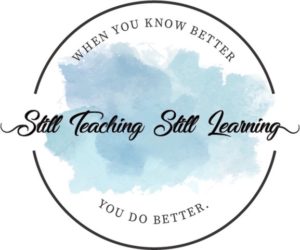Regardless of what curriculum you are given, there are some effective teaching strategies that are tried and true. These strategies can be adapted for anything you teach and will give you the best learning outcomes for your students.
In Facebook teacher groups, I often see teachers ask if anyone else teaches a specific curriculum for math or reading. Most of the time, teachers are asking for tips on making that curriculum a success. There is nothing wrong with asking that, but it made me wonder if the curriculum really makes all that much of a difference.

I have been teaching for 28 years and I’ve seen lots of different “programs” in that time. Yes, some are better and more effective than others. But even if you’re stuck with a curriculum that is not the greatest, there are still certain teaching practices that will make any curriculum, in any subject, more effective.
Here are 12 effective teaching strategies that work.

1 – Establish specific procedures and routines for students to follow to begin class. Even if you start your class with a community-building activity such as restorative practices circles (see my post HERE) or with read aloud (see my post HERE), think about how you start the academic part of your lesson.
One of the most effective ways to begin your class is with some kind of spiral review. Some people call this a warmup or a “do now”. It’s based on the science of retrieval practice. Jennifer Gonzalez on Cult of Pedagogy gives an excellent description of the research on retrieval practice HERE.
An easy way to begin incorporating a “do now”: use three questions (or problems in math):
*a question from yesterday’s lesson
*a question from last week’s lesson
*a question from last month’s lesson

2 – Review what you did yesterday. If kids were absent, this at least gives them a taste of what they missed and preps them for today’s learning. For everyone else, it strengthens the connections in the brain and “primes” them for today’s learning. This review can take anywhere between 1-5 minutes, depending on the topic.
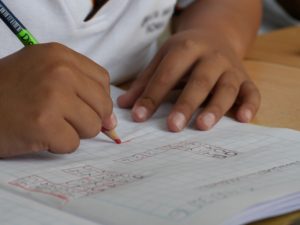
3 – Tell students the goal or objective of the lesson today. The learning target for the day should never be a mystery to kids. This learning target can take the form of “I can. . . “ statements, essential questions, or simple objectives such as “Today we’ll learn . . .” Preferably, you will post your objective somewhere in your classroom where you and your students can easily see it and refer to it. This also helps you to focus on how and when you will check for understanding (see tip #10 below).

4 – Present new information in bite-sized pieces. Teach only one concept or idea (or model only one math problem), then have students “practice” in some way. This can take the form of practicing another math problem, talking to another student about what the paragraph or section was about, writing down or reviewing their notes about the concept, drawing o diagram, completing part of a graphic organizer — whatever helps your students to process the information.
Try to keep a “5-minute limit” on teacher talk before allowing your students to process the information in one of these ways. Set a timer for yourself if you have to!

5 – Think aloud as you model anything for your students. Show them how you stop and think about what you’re reading, how you check your computation as you solve a math problem, how you proofread something you’ve written, how you slow down to decode a word or reread a complex part of the text. Remember that you are the most proficient reader, writer and problem solver in the classroom! Show your students how you do what you do.
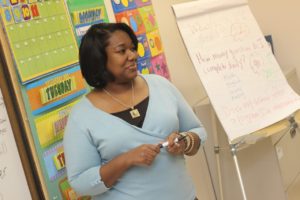
6 – Provide guided practice, or “training wheels” before you release them to “ride the bike” on their own. You might work through some problems together, summarize a passage together, or answer questions together. As you do this practice, closely monitor and address misconceptions right away.
This is often called the “we do” portion of the lesson. After you do this part, it’s great to then have a “y’all do” portion of the lesson. (Yes, I’m from the southern United States!) When your students do this part, they might work with a partner or a small group to do some of the practice before being released to do the work independently. This gives you another opportunity to circulate and monitor and guide the practice as needed.
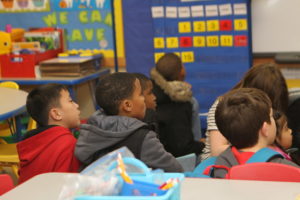
7 – Review the objective or essential question for the lesson. Point out to students what they just learned or practiced.
8 – Use graphic organizers as a way to help your students focus on the most important points or organize information in a visual way.
9 – Teach your students how to compare, contrast, and categorize information whenever possible. This helps them to make connections and it helps the learning to “stick.”

10 – Check for understanding, constantly! Don’t just wait until the end of the lesson to see if your students understood. Do this, in different forms, throughout the lesson and immediately re-teach if necessary.
There are multiple ways to do this. Here are some of my favorite ways:
*Use whiteboards and have students show their answer or their work.
*Ask them to show you with their thumbs whether their “windshield” (their understanding) is “clear” (they’re getting it), “buggy” (they kind of get it, but are a little unsure), or “muddy” (they are confused).
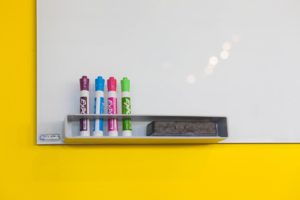
*Do a quick write on an index card or sticky note. In this way, students can tell you privately if they really do not understand. The drawback is that it takes a few minutes to read everyone’s responses.
*Listen to student conversations during partner talk or group work.

*Glance over students’ work, maybe by focusing on only one or two math problems or only one part of the graphic organizer or by looking at students’ notes during the note-taking process.
*Glance over “do now” or “bell ringer” work if you have students do any kind of warmup before class begins.
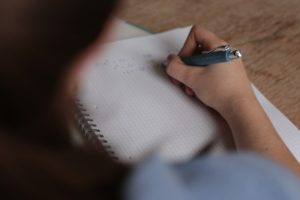
*Instead of asking “what are you doing?”, ask your students, “what are you trying to learn?”. This simple change of question focuses your students on what they are doing to help themselves learn rather than on what they are doing to check something off the task list.
*Use “equity sticks” to check student responses. These are popsicle sticks with students’ names written on them. (You could use something besides popsicle sticks. Basically you are using anything that randomly generates student names.) This keeps you from always calling on the students who are raising their hands. Those students probably do “get it”.
But what about the quieter students or students who don’t seek attention? This method not only gives them a voice but also helps you quickly check for understanding. If one or two students cannot answer the question, then you know that many more students probably also do not quite understand.

11 – Provide plenty of time for independent practice. I know that this post makes it look like teachers need to spend most of their time on the “teaching” part of the lesson. But in the actual lesson, you want to be sure that your students spend most of their time actually practicing whatever it is you are teaching them.
While it’s important to be sure that your students are ready for that independent practice (utilizing guided practice and frequent checks for understanding), the bulk of lesson time needs to be devoted to students’ practice with the teacher providing feedback. I like to use a timer to be sure that the teaching part of the lesson does not go on for too long.
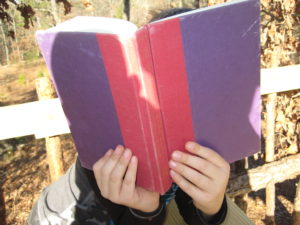
12 – Provide effective feedback. We’ve all given feedback like “great job” or “try again” and we know it’s not all that effective. Next time you are giving feedback to a student, try these tips:
*Be as specific as possible. Instead of saying “be careful when you’re regrouping”, you might say, “be careful to keep your ones and tens places lined up so that you put the regrouped number in the right place”. Give specific actions they can take to improve.
*Give feedback as quickly as possible. This can be difficult when you have a lot of students, but do the best you can to give feedback as quickly as possible.

*Be sure to validate the student’s effort and ability, along with the tricky parts of the task. Offer emotional encouragement and affirm your belief in the student. Even if the student appears to feel uncomfortable with this, they really do love hearing it.
*When a student asks for help, it’s a good idea to ask them what they’ve tried or where they’re stuck. We don’t want to reward “learned helplessness.” Depending on the student, you might send them back to try something first before you help them. Another idea is to ask them to read the directions or the problem or whatever they are working on. Very often, when they read it aloud to you, they notice whatever might have been confusing them.

Some great books about teaching in general:
*The Essential 55 by Ron Clark
*Teaching Essentials by Regie Routman
*Teach Like a Champion by Doug Lemov
*Make it Stick – The Science of Successful Learning by Peter C. Brown, Henry L. Roediger III, & Mark A. McDaniel

To recap, here are the 12 strategies:
*incorporate spiral review
*review where you left off yesterday
*tell students the learning goal for today
*present information in bite-sized pieces
*think aloud and model
*provide guided practice (“we do” and “y’all do”
*review the learning target at the end of the lesson
*use graphic organizers when possible
*help students make connections
*check for understanding frequently
*provide lots of time for independent practice
*provide effective practice
Use these strategies and let me know how they work for you!
